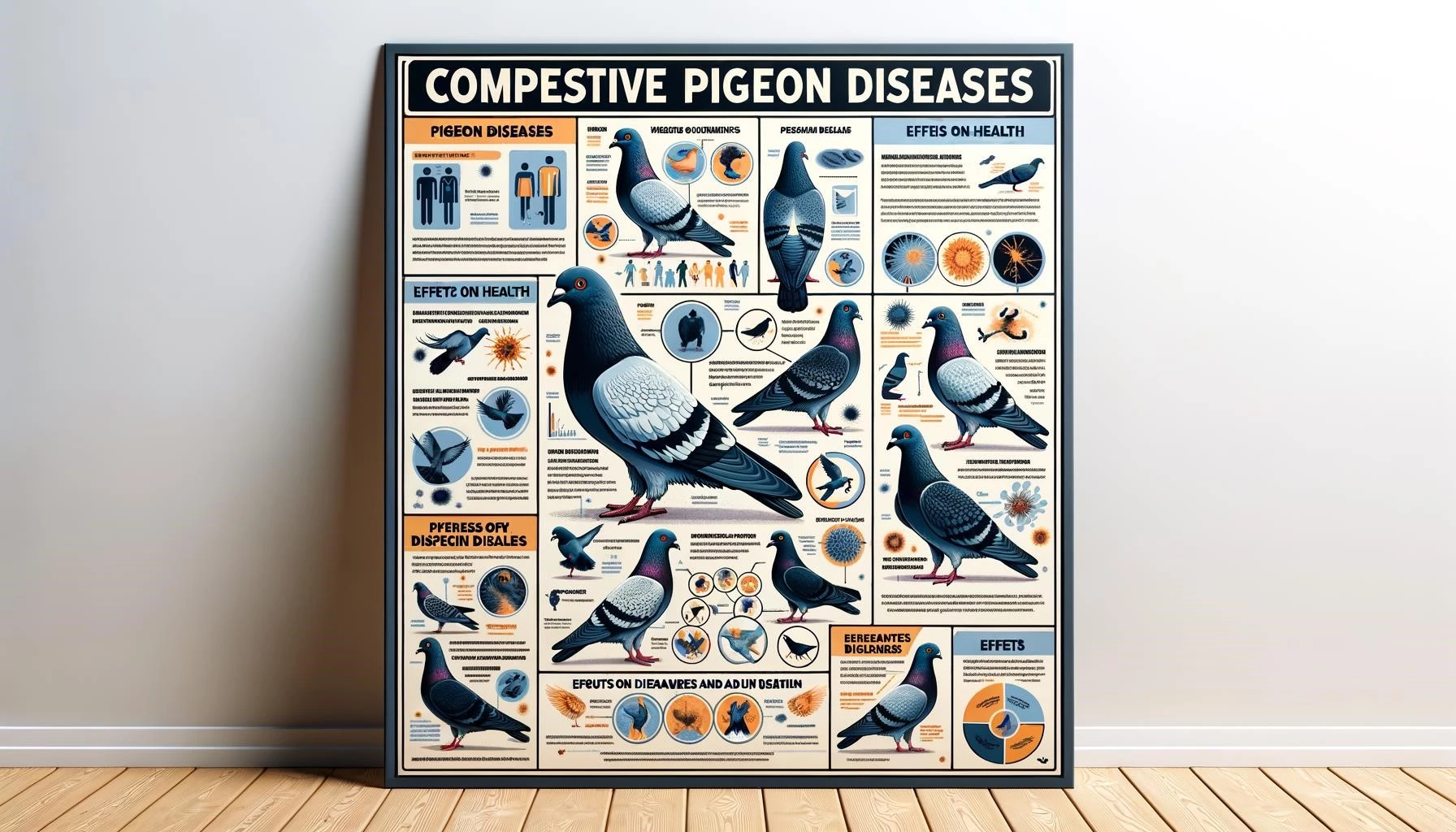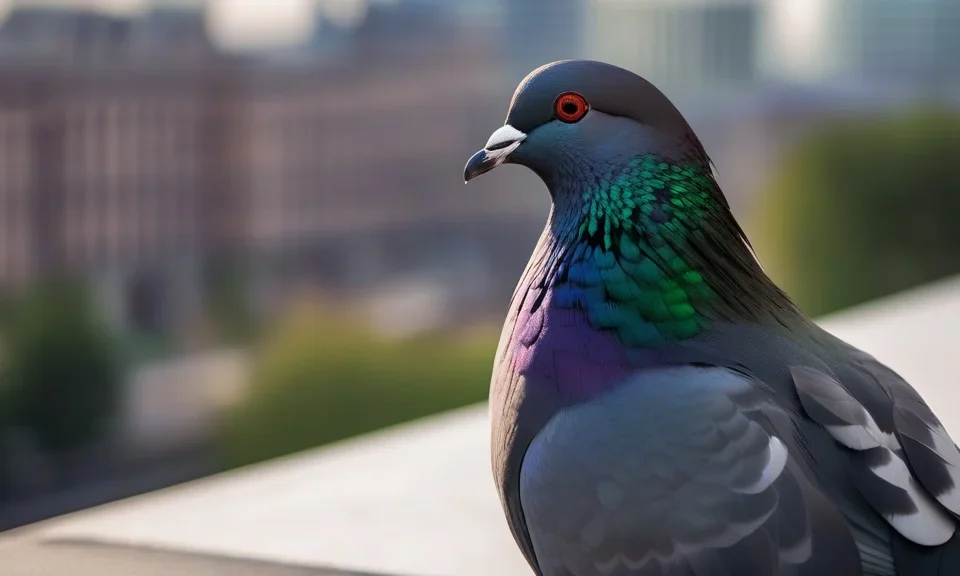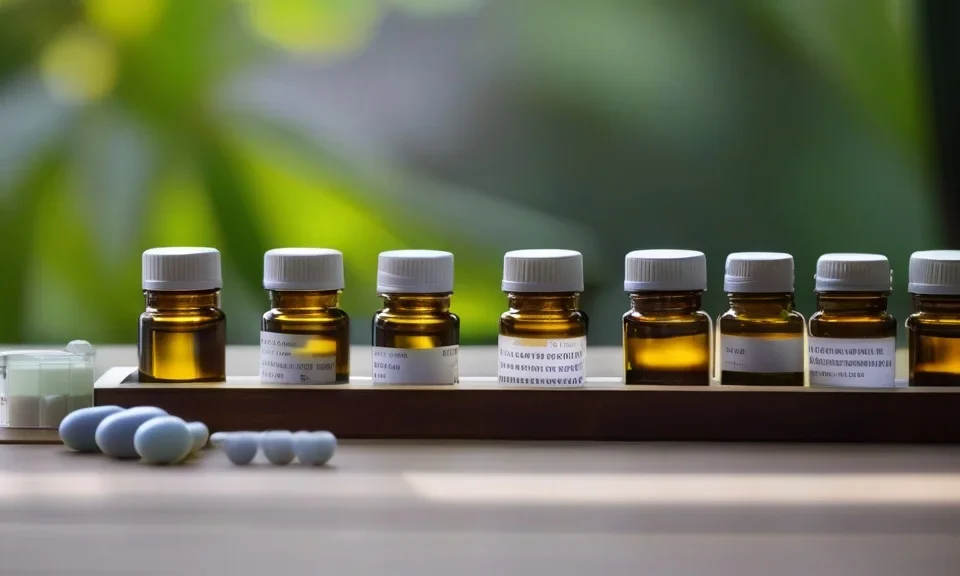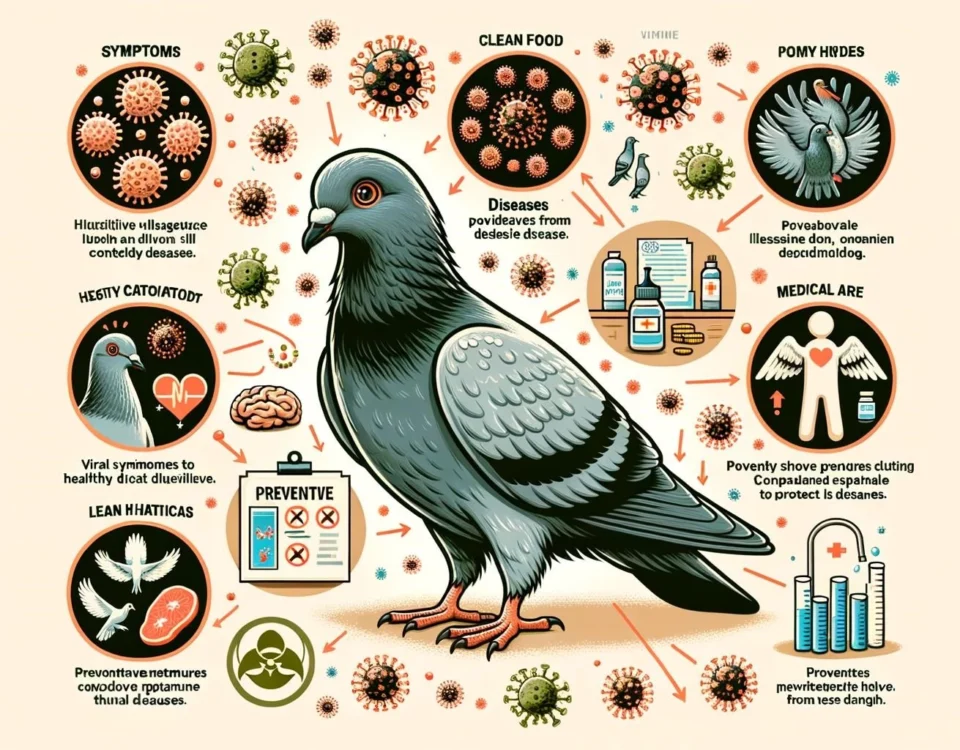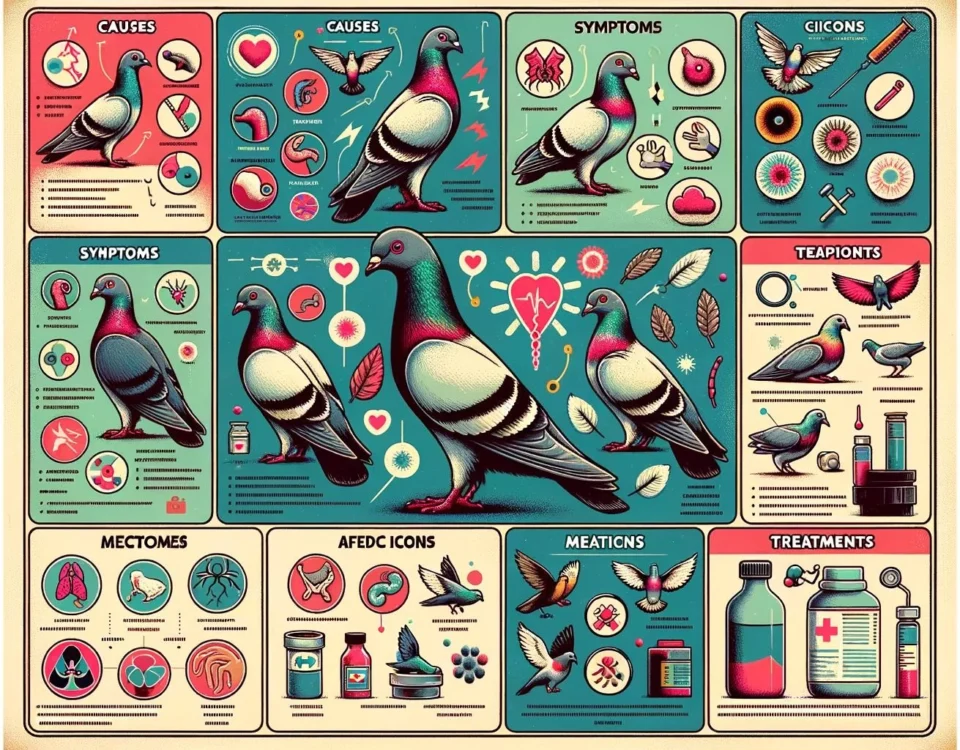Pigeons are common birds found in many urban and rural areas. While they may seem harmless, they can pose various health risks and cause damage to buildings. Pigeon diseases, in particular, are a concern as they can be transmitted to humans and other animals. In this article, we will explore the different pigeon diseases and their relationship with the environment.
Key Takeaways
- Pigeons can carry and transmit various diseases, including histoplasmosis, cryptococcosis, psittacosis, and salmonellosis.
- The environment plays a crucial role in the spread and prevention of these diseases.
- Maintaining a clean and stress-free living environment for pigeons is essential in preventing the onset and transmission of diseases.
Pigeon Diseases and Their Symptoms
Pigeons can carry several diseases that can be transmitted to humans and other animals. Here are some common pigeon diseases and their symptoms:
Histoplasmosis
Histoplasmosis is a fungal infection caused by the inhalation of fungal spores found in pigeon droppings. Symptoms of histoplasmosis can range from mild flu-like symptoms to severe respiratory infections. In individuals with weakened immune systems, the infection can be life-threatening.
Cryptococcosis
Cryptococcosis is another fungal infection that can be contracted by inhaling dried pigeon droppings. It primarily affects the lungs but can also spread to other organs, such as the central nervous system. Symptoms include cough, chest pain, headache, fever, and fatigue.
Psittacosis
Psittacosis, also known as parrot fever, is a bacterial infection that can be transmitted from pigeons to humans. It can cause pneumonia-like symptoms, including high fever, cough, headache, muscle aches, and shortness of breath. Severe cases may result in complications such as pneumonia or inflammation of the heart or liver.
Salmonellosis
Salmonellosis is a bacterial infection caused by various strains of Salmonella bacteria. Pigeons can carry and transmit these bacteria through their droppings. Symptoms include diarrhea, abdominal cramps, fever, and nausea. In severe cases, it can lead to dehydration and require hospitalization.
Prevention and Control Methods
To minimize the risk of pigeon diseases and create a healthier environment, several preventive measures can be taken:
Maintain a Clean Environment
Regular cleaning and removal of pigeon droppings from surfaces can help prevent the spread of diseases. Proper cleaning practices, such as wearing protective gloves and masks, should be followed to minimize exposure. It is also essential to keep indoor spaces free from pigeon roosting or nesting materials.
Implement Hygiene Measures
Practicing good personal hygiene, such as washing hands thoroughly after handling pigeons or cleaning up droppings, is crucial. Additionally, promoting general hygiene practices in pigeon-occupied areas can minimize the risk of disease transmission.
Ensure Adequate Ventilation
Proper ventilation can help reduce the concentration of airborne particles, including fungal spores and bacteria. By improving air circulation, the risk of respiratory infections can be minimized.
Implement Pigeon Deterrents
Installing bird deterrents, such as bird spikes, bird wire, or bird netting, can prevent pigeons from roosting or nesting in buildings. These physical barriers discourage pigeons from settling and reduce the chances of disease transmission.
Seek Veterinary Care
If you keep pigeons as pets or for racing purposes, regular veterinary care is essential. Vaccinations and routine health check-ups can help detect any diseases early and prevent their spread within the pigeon population.
Conclusion
Pigeons can carry and transmit various diseases to humans and other animals. Taking preventive measures and maintaining a clean and stress-free environment for pigeons can help minimize the risk of disease transmission. Regular veterinary care and practicing good personal hygiene are also crucial in preventing and controlling pigeon diseases. By implementing these strategies, the health and well-being of both pigeons and humans can be safeguarded.




